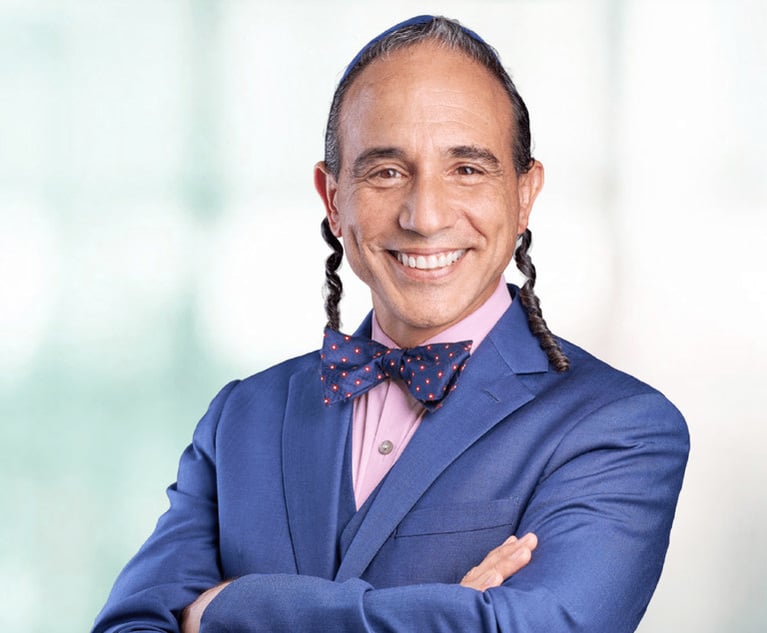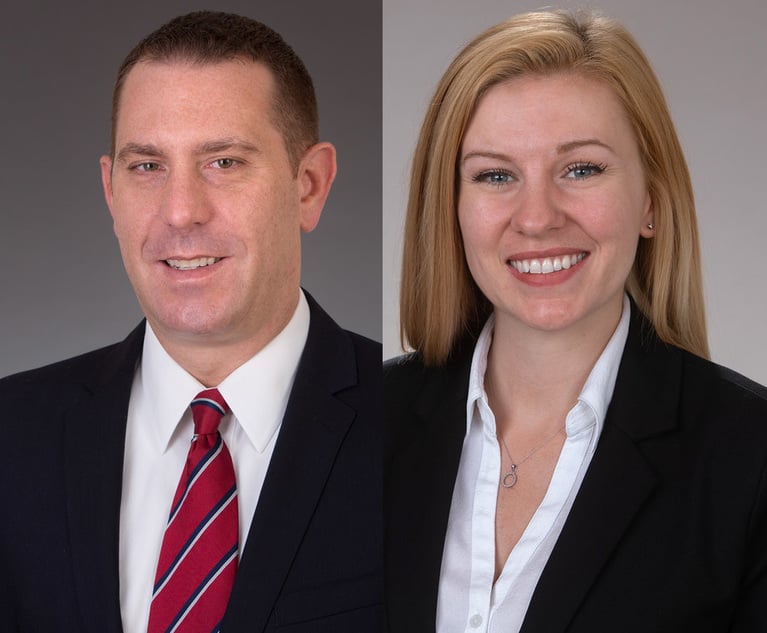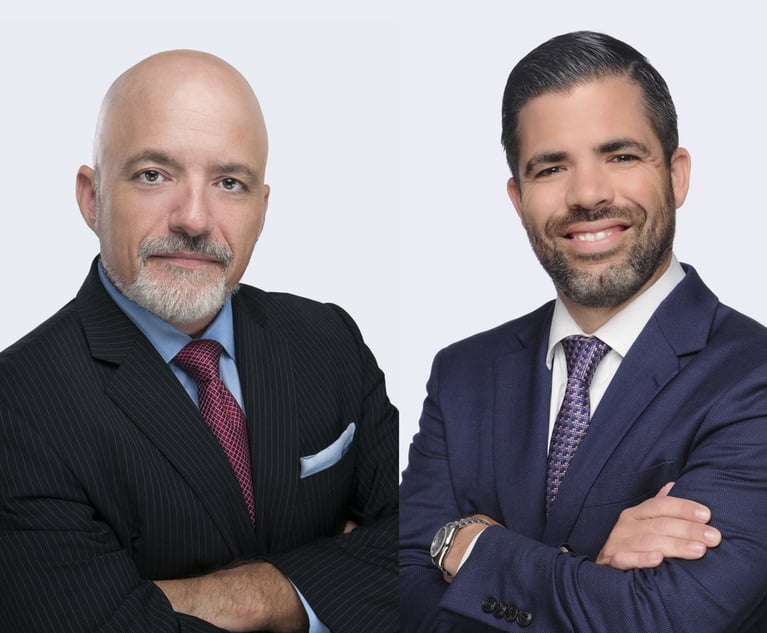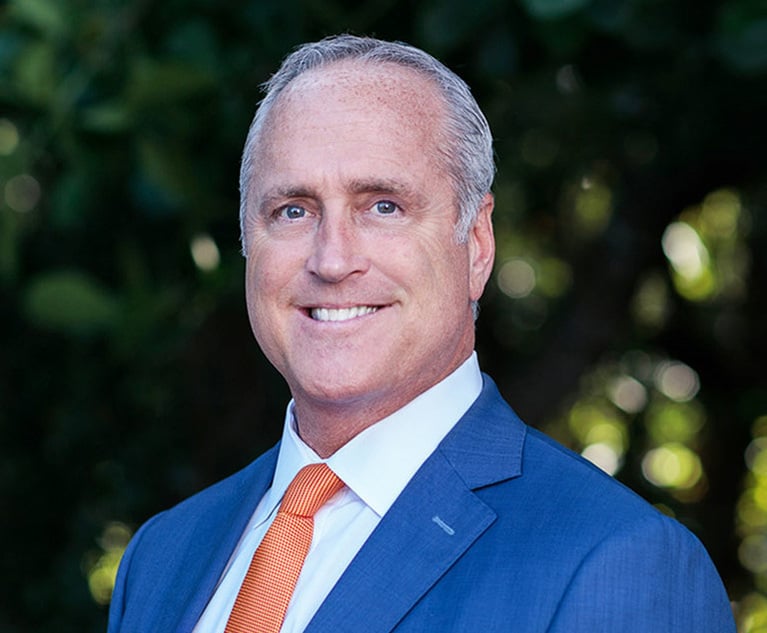Guiding Light: A Primer on E-discovery Protocols
The e-discovery protocol is an often misunderstood and feared component of modern litigation, intimidating many lawyers that are not versed in the ever-evolving field of e-discovery practice.
January 24, 2019 at 09:09 AM
5 minute read
By Robert R. Jimenez
 Robert Jimenez, Espinosa Martinez, Miami.
Robert Jimenez, Espinosa Martinez, Miami.The e-discovery protocol is an often misunderstood and feared component of modern litigation, intimidating many lawyers that are not versed in the ever-evolving field of e-discovery practice. Additionally, for attorneys who do not have the requisite knowledge or experience, meeting and conferring on a protocol that governs electronically stored information (ESI) seems like an ominous task—the first in a series of minefields that a more sophisticated opponent will lay. However, e-discovery protocols need not vex so many because, when done correctly, they can save money and time, ease burdens, and ensure compliance with acceptable modes of production.
Jurists, academics and e-discovery vendors repeat the mantra that discovery is collaborative, not competitive. Indeed, the most competent e-discovery counsel seeks to work hand-in-hand with opponents rather than retreat behind a wall of secrecy and obstructionism. The late William P. Butterfield—a giant of the e-discovery world who was honored recently by the Sedona Conference—often commented that zealous advocacy of one's client necessarily requires cooperation in discovery. One of the pinnacles of this cooperation is the agreement among parties for how they will identify, search for, process, and produce ESI. It is that agreement that becomes the e-discovery protocol, and it is those topics that the protocol addresses. The substance of the protocol is where attorneys and the clients they represent aim their cooperation, effort, and expertise.
To negotiate an e-discovery protocol requires counsel to understand key things about their client, the technology they use, and the ESI in the client's possession. To that end, answers to the following questions are required. Where does the data relevant to the litigation reside? Is it on hard drives, mobile devices, servers, or in possession of a third party such as Amazon, Google, Microsoft or others? Once that is identified, a data map—an outline of where and how ESI is stored, whether by an individual or across an entire organization—can be created, as can a list of custodians in possession of the data. This will also provide an insight as to how much ESI will need to be preserved and, potentially, searched. Armed with this information, lawyers from both sides can meet and confer on discovery in order to actually negotiate a protocol. The savvy e-discovery lawyer will know to ask his or her opponent the same questions they asked of their own client, always keeping in mind what is truly needed to prosecute or defend a lawsuit. As Butterfield was fond of saying, “the juice needs to be worth the squeeze.”
There are differing schools of thought as to whether a party should reveal a data map to an opponent, but if there is a desire to limit what data sources are searched, disclosing how ESI is maintained may be unavoidable. Many times, there is data asymmetry among parties—one side has more ESI than the other—which may lead to one party wanting (or needing) to limit the scope of any preservation, search, and production of data. The obvious reason is that the wider a search for relevant ESI, the greater the cost to review, host, and produce that data, and the greater likelihood that sensitive (or even privileged) information will be disclosed. As such, being able to articulate what ESI is kept and where is important in negotiating what data sources will be searched. The better prepared a lawyer and client are to negotiate and discuss these points, the more cost-effective and efficient their discovery process will be. An e-discovery protocol, of course, does far more than enshrine an agreement regarding the scope of discovery.
Protocols are versatile and can be utilized to address a broad range of issues and concerns the parties may have in discovery. For instance, they can list the keywords and names the parties will use to search for relevant documents and information, and they can do the same for metadata fields such as date of creation, author, and others. Critically, protocols delineate the form in which production is to take place, which is an area where the unknowledgeable must be weary. Too many attorneys agree to accept a production in PDF format, oblivious to the fact that in doing so they give up a treasure trove of information that also aids in reviewing ESI. Processing ESI from its native form into PDF will strip away metadata that could be valuable evidence, and a PDF production is a barrier to utilizing the power of data review software such as Relativity or RingTail. Protocols also routinely address the production of document “families,” the use of predictive coding and artificial intelligence on large data sets, and instructions for how the parties will deal with privilege logs. Although there is not a one-size-fits-all structure for a protocol, litigants and their counsel need not fear them because, at bottom, a protocol is a light that helps guide parties to the most important stage of a lawsuit: the resolution of the case.
Robert R. Jimenez is an associate with the Miami intellectual property law firm of Espinosa Martinez, P.L. He may be reached at: [email protected].
This content has been archived. It is available through our partners, LexisNexis® and Bloomberg Law.
To view this content, please continue to their sites.
Not a Lexis Subscriber?
Subscribe Now
Not a Bloomberg Law Subscriber?
Subscribe Now
NOT FOR REPRINT
© 2025 ALM Global, LLC, All Rights Reserved. Request academic re-use from www.copyright.com. All other uses, submit a request to [email protected]. For more information visit Asset & Logo Licensing.
You Might Like
View All



Trending Stories
- 1Who Is Nicholas J. Ganjei? His Rise to Top Lawyer
- 2Delaware Supreme Court Names Civil Litigator to Serve as New Chief Disciplinary Counsel
- 3Inside Track: Why Relentless Self-Promoters Need Not Apply for GC Posts
- 4Fresh lawsuit hits Oregon city at the heart of Supreme Court ruling on homeless encampments
- 5Ex-Kline & Specter Associate Drops Lawsuit Against the Firm
Who Got The Work
J. Brugh Lower of Gibbons has entered an appearance for industrial equipment supplier Devco Corporation in a pending trademark infringement lawsuit. The suit, accusing the defendant of selling knock-off Graco products, was filed Dec. 18 in New Jersey District Court by Rivkin Radler on behalf of Graco Inc. and Graco Minnesota. The case, assigned to U.S. District Judge Zahid N. Quraishi, is 3:24-cv-11294, Graco Inc. et al v. Devco Corporation.
Who Got The Work
Rebecca Maller-Stein and Kent A. Yalowitz of Arnold & Porter Kaye Scholer have entered their appearances for Hanaco Venture Capital and its executives, Lior Prosor and David Frankel, in a pending securities lawsuit. The action, filed on Dec. 24 in New York Southern District Court by Zell, Aron & Co. on behalf of Goldeneye Advisors, accuses the defendants of negligently and fraudulently managing the plaintiff's $1 million investment. The case, assigned to U.S. District Judge Vernon S. Broderick, is 1:24-cv-09918, Goldeneye Advisors, LLC v. Hanaco Venture Capital, Ltd. et al.
Who Got The Work
Attorneys from A&O Shearman has stepped in as defense counsel for Toronto-Dominion Bank and other defendants in a pending securities class action. The suit, filed Dec. 11 in New York Southern District Court by Bleichmar Fonti & Auld, accuses the defendants of concealing the bank's 'pervasive' deficiencies in regards to its compliance with the Bank Secrecy Act and the quality of its anti-money laundering controls. The case, assigned to U.S. District Judge Arun Subramanian, is 1:24-cv-09445, Gonzalez v. The Toronto-Dominion Bank et al.
Who Got The Work
Crown Castle International, a Pennsylvania company providing shared communications infrastructure, has turned to Luke D. Wolf of Gordon Rees Scully Mansukhani to fend off a pending breach-of-contract lawsuit. The court action, filed Nov. 25 in Michigan Eastern District Court by Hooper Hathaway PC on behalf of The Town Residences LLC, accuses Crown Castle of failing to transfer approximately $30,000 in utility payments from T-Mobile in breach of a roof-top lease and assignment agreement. The case, assigned to U.S. District Judge Susan K. Declercq, is 2:24-cv-13131, The Town Residences LLC v. T-Mobile US, Inc. et al.
Who Got The Work
Wilfred P. Coronato and Daniel M. Schwartz of McCarter & English have stepped in as defense counsel to Electrolux Home Products Inc. in a pending product liability lawsuit. The court action, filed Nov. 26 in New York Eastern District Court by Poulos Lopiccolo PC and Nagel Rice LLP on behalf of David Stern, alleges that the defendant's refrigerators’ drawers and shelving repeatedly break and fall apart within months after purchase. The case, assigned to U.S. District Judge Joan M. Azrack, is 2:24-cv-08204, Stern v. Electrolux Home Products, Inc.
Featured Firms
Law Offices of Gary Martin Hays & Associates, P.C.
(470) 294-1674
Law Offices of Mark E. Salomone
(857) 444-6468
Smith & Hassler
(713) 739-1250






